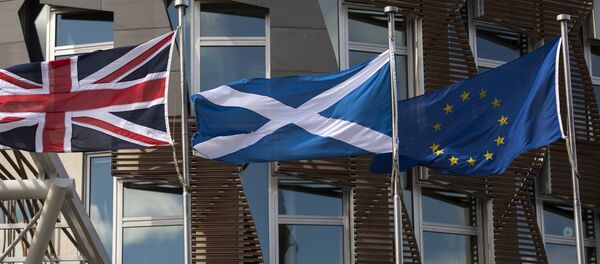Nonetheless, there are significant headwinds to the UK growth remaining, with not only the Brexit uncertainty holding back the private-sector investment, but also the lack of wage growth amidst the low unemployment affecting the consumer purchasing power outlook.
According to the Office for National Statistics’ (ONS) report, the UK retail and film industries contributed percentage points to GDP growth in Q2. Yet, the economic acceleration is not deemed sustainable due to the significant contraction in UK households’ savings rates.
"While services such as retail, and film production and distribution showed some improvement in the second quarter, a weaker performance from construction and manufacturing pulled down overall growth," Darren Morgan of the ONS said.
UK growth was 0.3 percent quarter-on-quarter in the April to June period, which is, albeit better than the first quarter’s 0.19 percent, is still below the post-Brexit vote 0.59-0.62-percent expansion in the third and fourth quarters of 2016. In the second half of the past year, the robust expansion in the manufacturing sector, supported by the weaker pound and higher industrial exports, drove a quicker GDP expansion, which is now almost out of the picture as the UK pound recovered to $1.31 compared to as low as $1.16 post-Brexit.
Chancellor of the Exchequer Philip Hammond said that the UK consumer are feeling the pain cause by higher inflation, even though inflationary pressures have eased in the recent months due to the pound’s recovery. The remaining abnormal (over the Bank of England’s targeted 2 percent) inflation is too weak to drive the manufacturing sector, but is still high enough to hamper consumer activity.
"Consumers are being affected by the inflation that was created by the depreciation of the currency in the autumn of last year. That will pass through the economy, but I absolutely recognise it’s painful as it’s passing through the economy," Hammond said.
The UK services sector drives about 80 percent of national GDP, and that sector alone grew by 0.5 percent quarter-on-quarter, thus producing a 0.3-percent overall GDP growth. Broader industrial output, including manufacturing, contracted by 0.4 percent, and construction slumped by 0.9 percent amidst the insufficient investment.
The post-crisis recovery has been weak, marred by the headwinds of the European debt crisis of the early 2010s, and the entailing austerity measures imposed by the government. Higher governmental spending could contribute to a quicker improvement in the national economy, but the cabinet, facing the challenges of high inflation and lingering budget deficit, seems to be uncertain and divided over the path of further fiscal policy.
"The confirmation of the lacklustre performance of the economy so far this year surely also diminishes the chance of an interest rate hike any time soon, especially as growth prospects for coming months have become increasingly skewed to the downside," Chris Williamson of HIS Markit said.
Indeed, the moderating inflation coupled with the slow GDP growth, put a Bank of England (BOE) interest rate hike off the table for at least two upcoming quarters. Currently, the BOE conducts a very accommodative policy, keeping interest rates at historic low of 0.25 percent, and unless the cabinet comes up with a solid fiscal stimulus package, raising borrowing costs would prove imprudent of the monetary authorities.
Meanwhile, the UK film industry posted a massive 8-percent growth in Q2, with the figure including UK film production, and box office revenues.
UK living standards, meanwhile, have declined for the first time since autumn of 2014. In the first quarter of 2017, inflation outpaced wage growth (2.5 percent compared to 2 percent), compared to 3-percent wage growth at zero inflation in mid-2015, and 1-percent wage growth at 2-percent inflation in early 2014. However, zero inflation is as bad for the economy as heightened price pressures, whilst the wages are currently not lagging behind the inflation quite as dramatically.
With unemployment declining to 4 percent, and the pound gradually recovering toward the early-2010s gauge of $1.41-1.60 (currently at $1.31 compared to the post-Brexit $1.20), the macro fundamentals do not look alarming, yet, there is little grounds for excessive optimism. UK economic growth is poised to remain average in the medium-term, posting only gradual improvements during the potentially tumultuous Brexit process.







